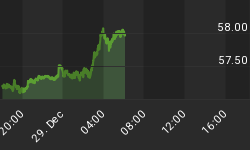In mid-September the Fed is placing new restrictions on the Primary Dealer Credit Facility, a swap-o-rama with broker dealers as opposed to banks.
The Financial Times picks up the story in Investment banks split over Fed loan facility.
Investment banks such as Goldman Sachs (GS) that have been less affected by the credit crisis are said to be leaning against accepting any significant new limits by the Fed, while those that have been somewhat more affected, such as Lehman Brothers, are seen as more eager to maintain access to the Fed facility even if it means new limits on risk-taking.
"Then you have people like Morgan Stanley (MS) in the middle saying everyone should just wait and see what the Fed comes up with" in terms of new regulation. None of the banks would comment officially, given the sensitivities and differences of opinion on what should be done.
The Fed initiative, spurred by the collapse of Bear Stearns, allows investment banks to pledge investment-grade securities, including mortgage-backed securities, in return for low-interest cash loans. The rationale for the facility was to ensure that none of the other banks would suffer the same kind of evaporation of short-term liquidity that sank Bear Stearns.
The big commercial banks have told regulators that the investment firms should be subject to the same tight requirements on debt and leverage and that no compromise should be allowed.
Leverage Got Banks In Trouble
It was leverage that got banks and broker dealers in trouble. Now banks are complaining that broker dealers get to use higher leverage than they do. Where would Citigroup, Wachovia, etc, be with higher leverage still?
One problem is the Fed should not be lending to broker dealers at all, regardless of leverage issues, not that the swap-o-rama should have a level play field. For more on this topic, please see Big Brother Monitors Investment Activity.
For a quick recap of the alphabet soup of lending facilities please see Fed Is Not King Midas.
Previously, the ECB Expressed Concerns Over Swap-O-Rama Exit Strategy, so perhaps restrictions are a sign the Fed is looking for an exit strategy. Then again, perhaps the Fed is simply seeking ways to exert more influence over broker dealers.
Goldman is resisting.
That Lehman is more willing to go along with new restrictions on lending is a telling indictment that Lehman is more desperate for liquidity than the other broker dealers.
















